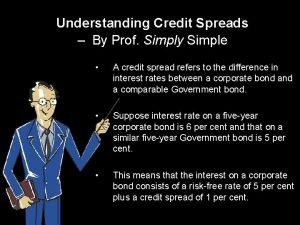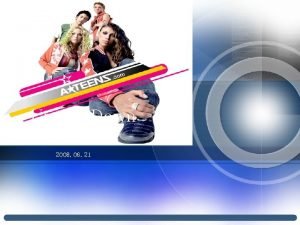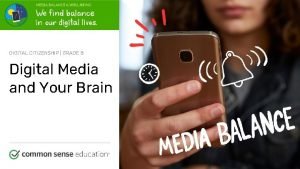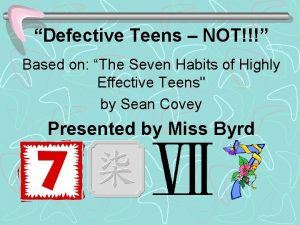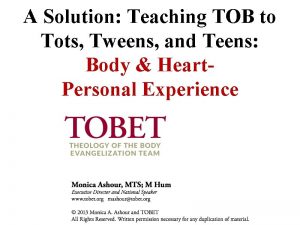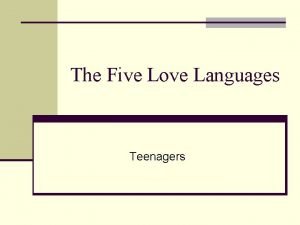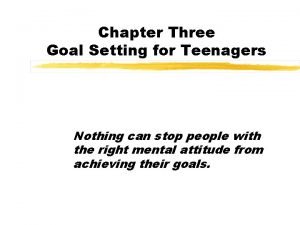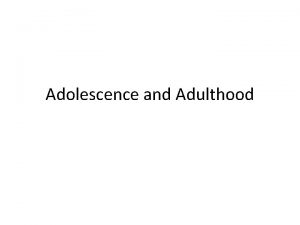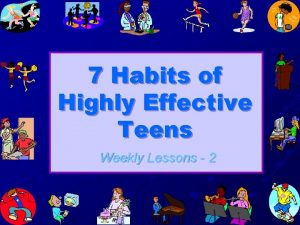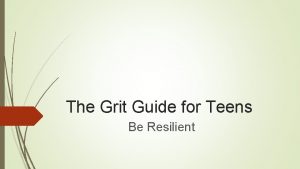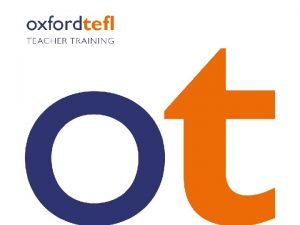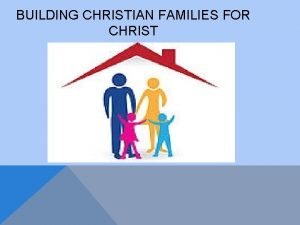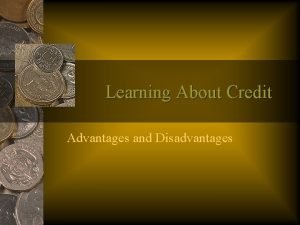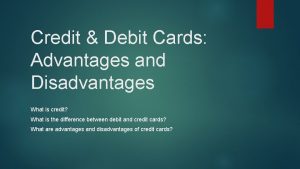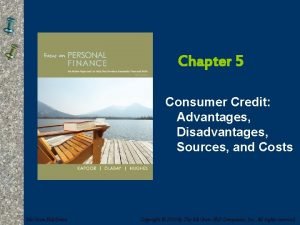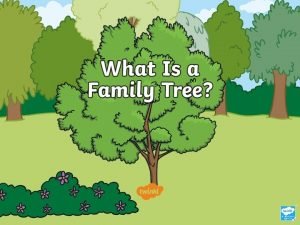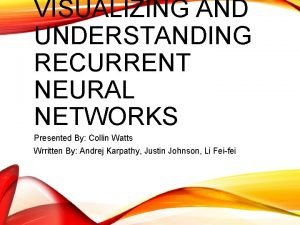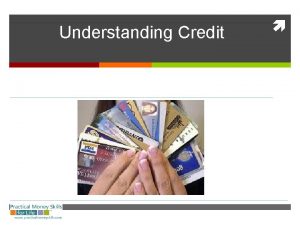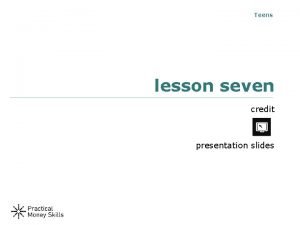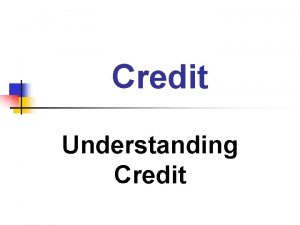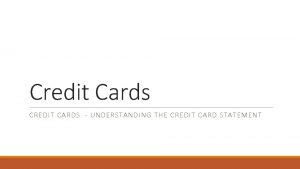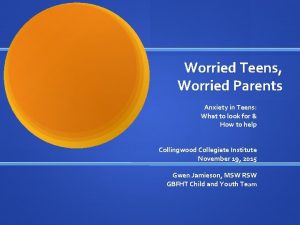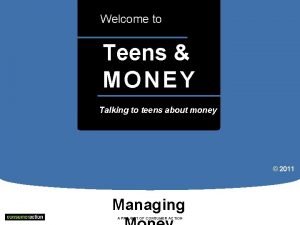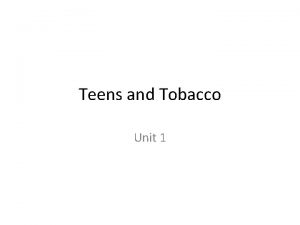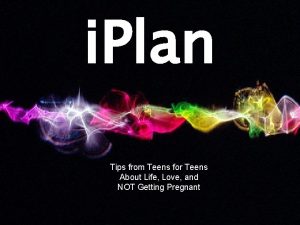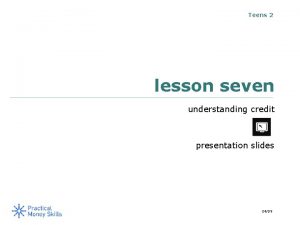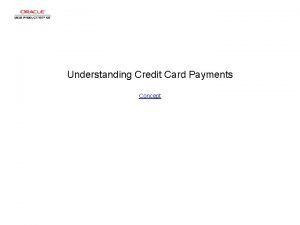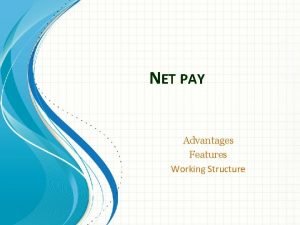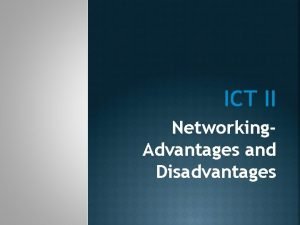Teens 2 Understanding Credit What is credit Advantages
































- Slides: 32

Teens 2 Understanding Credit What is credit Advantages and disadvantages Types of Credit Your responsibilities Creditworthiness Credit Bureaus Credit Score Myfico. com

What is Credit? • Fancy definition: – A contractual agreement in which a borrower receives something of value now and agrees to repay the lender at some date in the future, generally with interest. The term also refers to the borrowing capacity of an individual or company. • Simply said. . . – Buy now—Pay Later! • Debtor – Person buying on credit • Creditor – Person extending credit

Trust and Risk • Trust and Credit – You have to TRUST the debtor will pay back the creditor • Risk and Credit – There is always a RISK the person might not pay • Creditors use the following to determine if they have trust and can afford to risk lending money – Credit reference • Someone/organization that can show you have used credit in the past • Credit card companies, landlords, banks that have extended you credit – Credit scores • Collected by credit bureaus to show your history with credit – 3 C’s of Credit

the 3 C’s 1. Character • Will you repay the debt? • Are you honest and reliable? • Have you used credit before? • Do you pay your bills on time? • Do you have a good credit report? • Do you have character references? • How long have you lived at your present address? • How long have you been at your present job? Teens 2 – Lesson 7 - Slide 7 -2 a

the 3 C’s 2. Capital • What if you don’t repay the debt? • Do you have any valuable assets? –These are known as collateral • Cash • Vehicle • Home • Retirement • Do you own property? • Do you have a savings account? • Do you have investments? Teens 2 – Lesson 7 - Slide 7 -2 b

the 3 C’s 3. Capacity • Can you repay the debt? Are you CAPABLE? • Do you earn enough income to support your credit use? • Do you have a steady job? • What is your salary? • How many other debts do you have? • What are your current living expenses? • What are your current debts? • How many dependents do you have? Teens 2 – Lesson 7 - Slide 7 -2 c

Advantages Of Credit Using credit means… • You can buy items now. • You don’t have to carry cash. • You have a record of your purchases. • Convenience. • Your bills are combined into one payment. Teens 2 – Lesson 7 - Slide 7 -1 a

Disadvantages Of Credit Using credit also means… • You pay more for items (interest payments). • Your credit cards may be lost or stolen. • Possible added fees. • You may do more impulse buying. • It’s easy to lose track of how much you spend. • Possible financial problems. Teens 2 – Lesson 7 - Slide 7 -1 b

Your Responsibilities • Borrow only what you can repay. • Read and understand the credit contract. • Pay debts promptly. • Notify the credit company immediately if you cannot meet payments. • Report lost or stolen credit cards immediately. • Never give your card number over the phone unless you placed the call. Teens 2 – Lesson 7 - Slide 7 -1 c

building a credit history • Establish a steady work record. • Pay all bills on time. • Open a checking account. Don’t bounce checks. • Open a savings account. Make regular deposits. • Apply for a local store credit card. Make regular payments. • Get a co-signer on a loan. Pay off the loan as agreed. Teens 2 – Lesson 7 - Slide 7 -2 d

Types of Charge Accounts • Regular Charge Account – Often used with services such as: • Cell phone bill • Dental service • Furnace repairman – Idea is that you will receive service and then pay • Still a buy now, pay later – Usually given a 30 day notice for payment; and then make full payment – Typically not a service charge if you pay on time

Types of Charge Accounts • Budget Charge Account – Used for services like electric/gas – Typically this service fluctuates; allows you to take an average and pay that monthly • Winter months could be much more expensive – Pay at the end of the month and typically not a finance charge

Types of Charge Accounts • Revolving Charge Account – Typical with charge cards – Credit Limit—can charge up to an amount • Could be $2500 – Minimum payment due is a % of the amount you have charged • Let’s say you have a balance of $600 • Minimum payment might be $50 • But, now you still owe at least $550—but usually more – Due to finance charges • Realistically, you could go charge more – This is often an area of concern for people – Finance charge for balance due

Installment Credit • Cars loans and homes (mortgages) are examples of installment credit • Adds the following – Total purchase + Finance Charge = Total borrowed • Determines a monthly payment – Total borrowed/number of payments = Monthly payment • Pay a set amount each month until the item is paid off

Terms with loans • Single payment loan – Short term loan that is paid off in a single payment • Promissory note – A special form that the creditor has the debtor sign – Basically says, “I promise to pay back what I am borrowing” • Collateral – Something of value that is pledged to the creditor if the debtor does not/is not able to pay back the loan • Secured loan – A loan that used collateral; gives a sense of security for the creditor • Cosigner – Signs on behalf of the debtor if they are not able to receive credit on their own – Would be held liable if debtor does not pay creditor • Truth in Lending Act – Creditors are required by law to disclose how much the credit is costing the debtor—before they agree to purchase

The Cost of Credit • 3 Variables – Principal • The amount of the purchase/how much you are borrowing – Interest Rate • The % of interest that you are being charged for the use of the creditor’s money • Can vary based on purchase, economic factors, and your credit score – Credit Score—the worst your credit score—the higher the interest rate – Time • How long are you borrowing money for? – The longer you are borrowing—generally a higher interest rate – A shorter term loan—generally a lower interest rate P x R x T = I (Cost of Credit/Interest)


a credit report Teens 2 – Lesson 7 - Slide 7 -2 e

what is a debt load? Teens 2 – Lesson 7 - Slide 7 -3 a

how much can you afford? How much can you afford to borrow? (the 20 -10 rule) 20: Never borrow more than 20% of your yearly net income. Example: You earn $400 a month after taxes. Your yearly net income is: $400 x 12 months = $4, 800 20% of your yearly net income is: $4, 800 x 20% = $960 You should have less than $960 of debt! ___________________________ 10: Your monthly payments should be less than 10% of your monthly net income. Example: You earn $400 a month after taxes. 10% of your monthly net income is: $400 x 10% = $40 You should pay less than $40 per month for all debts! Teens 2 – Lesson 7 - Slide 7 -3 b

comparing credit cards • Type of account/ Name of card • Acceptability • Annual fee • APR • Grace period • Credit limit • Minimum monthly payment • Late payment fee • Other features Teens 2 – Lesson 7 - Slide 7 -4 a

are you thinking about a credit card? Shop around… • Look at different sources. 1. 2. • • • Read and understand the contract… Read the contract carefully. Take your time before you sign. Get a copy of your signed contract. 3. • • • Know your cost… Figure out total price. Make the largest payments possible. Know the charges for missed payments. Teens 2 – Lesson 7 - Slide 7 -4 b

credit card promotions Congratulations!! You have been selected to receive one of our $5000 credit cards … 5% Cash Back on Purchases! No Annual Fee! 0% Introductory APR! BAD CREDIT? IT’S OKAY. . . YOU’RE APPROVED! School is tough enough but choosing the best credit card to get you through is a breeze… YOU CAN’T BE TURNED DOWN! Earn points towards free merchandise! GUARANTEED INSTANT APPROVAL No Credit? It’s Okay. . . You’re Approved! This cool card comes loaded with a great low interest rate, photocard ID, and super discounts on stuff you really want. NO Co-Signer and NO Minimum Credit Required Money-Saving Student Special Offers There are no job or credit checks. You can’t afford to pass this up! Teens 2 – Lesson 7 - Slide 7 -4 c

keep it or discard it? Teens 2 – Lesson 7 - Slide 7 -4 d

reading a credit card statement Teens 2 – Lesson 7 - Slide 7 -4 e

Equifax credit bureau

warning signs of financial difficulties • You don’t know how much you owe. • You often pay bills late. • You obtain a new loan to pay old loans. • You pay only the minimum balance each month on credit cards and other charge accounts. • You spend more than 20% of your net income (after paying rent) on loans and credit card payments. • You would have an immediate financial problem if you lost your job. • You are spending more than you earn. • You use savings to pay day-to-day expenses. Teens 2 – Lesson 7 - Slide 7 -5 a

first steps to take if you can’t pay your bills Take a close look at your budget. • Trim your expenses. • Be realistic about what you can afford. Contact your creditors. • Tell them: why you can’t pay. that you intend to pay. when/how much you will be able to pay. • Ask if you can work out a new payment schedule. • If possible, continue to make minimum payments. Teens 2 – Lesson 7 - Slide 7 -5 b

understanding credit National Foundation for Consumer Credit (NFCC) • Offers information on financial and consumer topics. • Reviews your income. • Helps you set up a realistic personal budget. • May contact your creditors and make arrangements for reduced payments on your bills. • Helps you plan for future expenses. • Services may be available for no charge or reasonable fee. • Listed in yellow pages under “credit counseling. ” Watch out for “credit repair” companies! • Offer for-profit counseling. • May advertise they can erase a poor credit history quickly — DON’T BELIEVE IT! Teens 2 – Lesson 7 - Slide 7 -5 c

credit score • http: //www. myfico. com/Credit. Education/Whats. Not. In. Your. Score. aspx • FICO Scores of U. S. Consumers – FICO Score Percent of Population – 800+ 13 percent – 750– 799 27 percent – 700– 749 18 percent – 650– 699 15 percent – 600– 649 12 percent – 550– 599 8 percent – 500– 549 5 percent – 499 or less 2 percent


Questions?
 Understanding credit spreads
Understanding credit spreads A-teens 사라 룸홀트
A-teens 사라 룸홀트 Nnteens
Nnteens Png
Png Teensnn
Teensnn Short term teenage goals
Short term teenage goals What media habits did teens talk about?
What media habits did teens talk about? Tumor twins 7 habits
Tumor twins 7 habits Tots tweens and teens
Tots tweens and teens Courage zone 7 habits
Courage zone 7 habits Emotional love language
Emotional love language Long term goals for teenagers
Long term goals for teenagers One's accumulated knowledge would highlight intelligence
One's accumulated knowledge would highlight intelligence 7 habits of highly effective teens quotes
7 habits of highly effective teens quotes 7 habits of highly effective teens lesson plans
7 habits of highly effective teens lesson plans Grit guide for teens
Grit guide for teens 5 habits of highly effective
5 habits of highly effective 7 habits of highly effective teens habit 2
7 habits of highly effective teens habit 2 Project ideas for teens
Project ideas for teens Hummel teens
Hummel teens Love language test
Love language test Teens4unity
Teens4unity Janet belsky
Janet belsky This can be avoided by giving credit where credit is due.
This can be avoided by giving credit where credit is due. What is trade credit advantages and disadvantages
What is trade credit advantages and disadvantages Debit cards advantages and disadvantages
Debit cards advantages and disadvantages What are the disadvantages of consumer credit
What are the disadvantages of consumer credit Father grandfather
Father grandfather Semantic understanding
Semantic understanding Visualizing and understanding recurrent networks
Visualizing and understanding recurrent networks Visualizing and understanding convolutional neural networks
Visualizing and understanding convolutional neural networks Ranjani saigal
Ranjani saigal Venerated quarrel
Venerated quarrel
